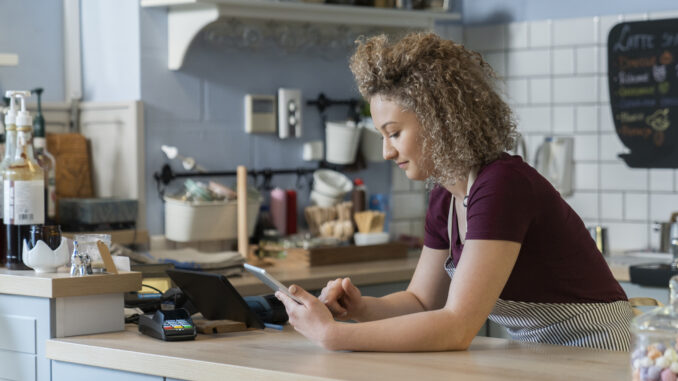
By Luke Smith, RTN Features Writer - 4.26.2023
In today’s digital age, social media is an essential component of any business. Without a strong social media presence, restaurants run the risk of being overlooked by potential customers who are searching for their next dining experience. In fact, customers are more likely to choose restaurants that highlight their best dishes and superb service online.
It’s understandable for restauranteurs to feel apprehensive about starting a social media account, especially if their expertise lies in preparing food and not managing social media. However, managing a business account is easier than it may seem. With the right strategies, you can learn to post effective social media content quickly and take full advantage of the technology at your disposal.
While managing a social media account may seem like another task to add to an already overwhelming daily schedule, it can actually be a valuable asset to your business.
 Social media marketing is a powerful tool that can help businesses keep an eye on industry trends and conduct competitor analysis. By monitoring competitor’s social media accounts, restaurants can gain valuable insights into their strategies and use them to improve their own promotional offers and special menu items.
Social media marketing is a powerful tool that can help businesses keep an eye on industry trends and conduct competitor analysis. By monitoring competitor’s social media accounts, restaurants can gain valuable insights into their strategies and use them to improve their own promotional offers and special menu items.
In addition to being a cost-effective form of marketing, social media offers businesses an opportunity to build a strong brand through shared content online. Social media platforms also provide access to a wider and stronger audience that may not have been reachable through traditional marketing methods. For instance, according to a survey, over 50% of diners were influenced by social media when choosing a restaurant, emphasizing the importance of having a strong social media presence.
Furthermore, social media offers the potential to build a community that can support your restaurant globally, which can ultimately lead to increased footfall in your business and a steady stream of customers.
Social Media Platforms
Social media platforms the average restaurateur should use include:
- Facebook: Not only does your local Facebook page listing help with Google’s NAP, Facebook’s advertising features allow restaurateurs to focus efforts on the ideal target customer. Some market research and ads targeted toward your specific demographic could go a long way.
- Instagram: Instagram’s focus on visuals means you can share high-quality videos and photos of not only your dishes and restaurant, but of menus, employee highlights, and even community/social projects. You can use features like Instagram Stories and IGTV to share behind-the-scenes content and promotions, engage with followers, and build a loyal community of customers.
- TikTok: TikTok is one of the fastest-growing social media platforms on the market, and the prioritization of creative and visually appealing content makes it conducive to the restaurant format, as well as for targeting a younger demographic. Of course, there are currently controversies surrounding whether TikTok will be banned, so use it at your own discretion.
- Pinterest: Pinterest can help highlight your establishment’s menu items, culture, and restaurant atmosphere. Try optimizing your pins and boards containing unique restaurant themes or items to draw in a new crowd.
- Twitter: While not the most visual platform, restaurateurs can use hashtags and participate in the community at large if they’re trying to become “thought leaders” in their industry. More often, though, restaurateurs will utilize Twitter as a platform for responsive, real-time customer service.
Of course, the above list is not comprehensive, and the platform you use will vary depending on your own restaurant’s specific situation, target audience, location, etc. Do your research and select the social media platform you want to use based on your own needs.
Content Creation
To effectively showcase your restaurant’s menu on social media, it’s not necessary to create complicated content forms like hours of B-roll or voiceovers. Simple content forms like photography and email marketing can be effective, as noted in the original statement.
Adding visuals to your tweets, such as an image of a menu item, can significantly increase engagement. According to a survey, users are more likely to engage with social media postings that include images or short videos. Therefore, taking a few high-quality pictures of your best-performing products with professional lighting and a well-presented angle can go a long way in attracting potential customers.
Timing is also a crucial aspect of social media marketing. To maximize engagement, it’s best to post during high-traffic times, such as 9 AM, 12 PM – 1 PM, and 8 PM. Posting during these times can lead to potential customers calling to make reservations or ordering takeout through your business. Make sure to include links to your website in tweets or Instagram posts to make it easier for followers to find and book a table at a time that suits them
Creative Content Ideas
The actual posting process is relatively easy. Instagram, Twitter, and Facebook were all designed for pain-free and efficient posting. However, actually generating content ideas for your restaurant can be tricky.
 Avoid the inclination to be “unique”. Your restaurant may use secret sauces and serve up distinctive dishes, but your social media content should follow broad market trends. Aligning your posts with wider trends is the best way to increase your reach and draw more people to your page.
Avoid the inclination to be “unique”. Your restaurant may use secret sauces and serve up distinctive dishes, but your social media content should follow broad market trends. Aligning your posts with wider trends is the best way to increase your reach and draw more people to your page.
Use TikTok trends to identify popular hashtags, sounds, and creators. Use these trending ideas to formulate your own content and try to emulate content that genuinely engages or entertains you.
If you’re still struggling to generate content ideas, add creativity to your calendar. Setting aside time to get in the right frame of mind can increase your creativity and help you generate content consistently. Try to pick a time of day when the menus are settled, the orders are complete, and you don’t have to worry about chefs and waiters going rogue while you look after your social accounts.
Responding to Reviews
Any interaction users make with your online social media account is a good one. Followers who engage with your accounts boost your profile visibility and bring more folks to your site. That being said, anyone familiar with the anonymity of online posting can tell you to expect some negative comments from time to time.
 The main struggle in this for all online users is how to respond. Your reputation is on the line, after all, and your responses can let passerby users know you care about the integrity of your restaurant and your diners’ experiences. Responding to negative reviews promptly is a great way to manage your brand reputation. Stay professional and courteous throughout but do not apologize for factors out of your control. Instead, open lines of communication and offer freebies to disgruntled customers who have valid complaints.
The main struggle in this for all online users is how to respond. Your reputation is on the line, after all, and your responses can let passerby users know you care about the integrity of your restaurant and your diners’ experiences. Responding to negative reviews promptly is a great way to manage your brand reputation. Stay professional and courteous throughout but do not apologize for factors out of your control. Instead, open lines of communication and offer freebies to disgruntled customers who have valid complaints.
Remember to respond to positive reviews, too. Generic “thank you!” statements boost your engagement and can boost traffic to your social media page. Consider copying down the best reviews your receive and weave them into your next email marketing campaign.
Start simple with visual content that creates engagement amongst your followers. Schedule your posts to align with meal times and follow market trends to give your content creative direction. Respond to reviews and engage with your followers regularly to show that you’re serious about your brand and care about improving the quality of of the guest experience.
 Luke Smith is a special contributor to Restaurant Technology News. Based in Boise, Idaho, he covers a wide range of subjects, but takes a particular interest in covering topics related to business technology, digital marketing, and topics related to hospitality productivity. When he isn’t writing you can find him traveling, hiking or getting into the latest technology.
Luke Smith is a special contributor to Restaurant Technology News. Based in Boise, Idaho, he covers a wide range of subjects, but takes a particular interest in covering topics related to business technology, digital marketing, and topics related to hospitality productivity. When he isn’t writing you can find him traveling, hiking or getting into the latest technology.
Are you an industry thought leader with a point of view on restaurant technology that you would like to share with our readers? If so, we invite you to review our editorial guidelines and submit your article for publishing consideration.

